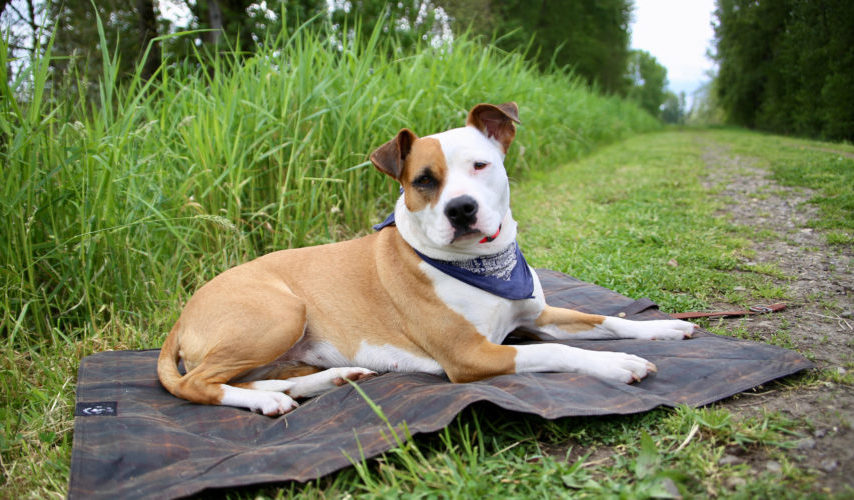Traveling with pets can seem overwhelming, but it doesn’t have to be that way. Bringing your cat, dog, bird, or even rabbit on a flight or in your car is very doable if you know how to do it.
Whether you are flying or driving, your pets can come along for the ride. The key is to be prepared and plan ahead.
“But, how can I be prepared?”, you may ask.
And that is where we can help. We have gathered the top 10 travel tips for you and your trusted sidekick to make traveling by air or land a breeze.
Find an approved crate or cage that works for your animal
If you are flying with your pet, you will want to look up approved crates for your airline. Plastics crates are usually recommended, and you should find a crate large enough for your animal to stand up and move around. For flying, the USDA requires the crates to have: food and water dishes, “Live Animal” stickers, upright arrows, and bedding.
For road travels, plastic crates are also recommended. Get your animal acclimated to riding in their crate by taking them on multiple short trips before you set off for real.
Get the paperwork in order
Before the big trip, you will want to visit your vet to make sure your pet is healthy and that you have the appropriate paperwork for traveling with your pet. Most government officials will want to see a record of vaccinations, but be sure to check the requirements for your destination. While you’re at the vet, make sure to stock up on any prescription medication your pet might be taking as well.
Medication for relaxation
Sedating your pet through medication is also an option, but consult your vet to make sure you find what is right for your pet if you are interested. Some tranquilization methods can hinder breathing in animals, so it is very important to go through your vet. But sedating your pet in some form before travel can be a great way to reduce the stress or anxiety they may be feeling. It can also help them rest through the long flight or ride.
If flying, choose a direct flight
Choosing a direct flight when flying with your pet will mean your pet can stay settled, and it will also reduce the amount of time your pet has to be handled by airline workers. It can reduce stress for you too because you won’t have to worry about your pet during any layover transfers.
Do your research
For flying, make sure to look up: types of pets allowed, how they should be crated, if there are any age or weight restrictions, how much it will cost, and if they can fly internationally. Look up all the information that the airline has, and contact them as well with the details of your trip and pet to double check that you understand everything correctly. Also look up any past reviews or incidents the airline has had with pets to make sure they have a good reputation.
You also need to do research for driving as well. If you are crossing state or international borders, you need to check if there are any type of requirement or restrictions. It can be helpful to look up pet-friendly parks along the route that you can stop at as well.
Identification
No matter where to or how you are traveling with your pet, you should make sure they have proper identification. Sturdy collars that have tags with the animal’s name and your current information, or a microchip if necessary.
For flying, you will also need proper crate identification. It’s a good idea to write your pet’s name, your name and phone number, your destination, and a picture of your pet and tape it to the side of your crate. This can really help in the case your pet makes an escape.
Plan for breaks if possible
This one really only applies to road travel. If you are driving with your pet, make sure to take as many breaks and stops as you can. Give them time outside to go to the bathroom, get some fresh air, and stretch their legs. Which is good advice for human travelers too!
Don’t leave them unattended
If you are flying, you need to leave them in the hands of trusted airline personnel. But what you can do is make sure to inform every airline employee you come across that you are traveling with a pet, and insist that it be checked on whenever possible.
In cars, this should be common practice. But people tend to let this one slip on long road trips. This is potentially dangerous for your pet, even if you think conditions are fine. Stop at places where your pet can either come inside with you, or travel with another human friend that can stay with your pet.
Pack the essentials
Just like you need your travel essentials, so does your furry friend. Make sure you have food and water in the crate and extra packed with you. Consider bringing treats and comfort items (like a favorite toy or blanket) to help keep your pet at ease during the changes of traveling. Pack all the necessary medications and supplies as well — like food bowls, waste scoopers and plastic bags, and a leash.
Expect the unexpected
Whenever you travel, it’s always good to be prepared. Especially when traveling with pets. You never know how your animal will react when thrown into a new, unsettling situation. Be prepared with a pet first aid kit, extra paperwork, and current photos on hand in case of injury or escape. Remain overly cautious with securing your animal in its crate and checking for any potentially toxic materials it could get a hold of.





